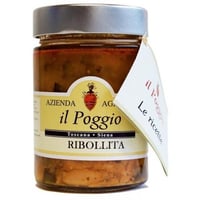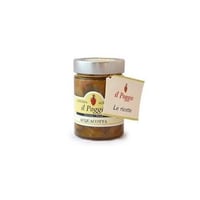Ready-to-Eat Soups
With the cold, there's nothing better than a soup: warm, inviting, ready to use but prepared according to ancient recipes with the same passion you would put into it! In this section, you’ll find various ready-made soups to warm up your winter evenings. At Spaghetti e Mandolino, we have selected the best fresh quality soups. Just find your favorite and enjoy a delicious moment of relaxation at home.
How we ship ready-made soups
In our online shop, you will find refined and high-quality flavors such as Acquacotta Toscana or Kale Soup. We guarantee proper packaging that preserves all the characteristics and properties of the product, along with fast shipping to ensure these flavors reach your table in no time. So, what are you waiting for? Order your favorite soup, and it will arrive at your home in no time, in perfect condition, as if freshly packaged.
Ready-to-Eat Soups: chosen by us
Manufacturers of soups
Ready-to-Eat Soups: online sale
Warm, healthy, and inviting, there’s nothing better than a nice soup to warm up after a winter day spent outdoors. Not only that: vegetables, as we know, are good for you, and preparing or buying delicious fresh soups is a healthy habit we should all have, especially when it comes to quality products.
Difference between soup, broth, minestrone, and puree
Even though these terms are sometimes confused in everyday use, and even though some traditional dishes don't always follow these definitions, there are important preparation differences between these four dishes.
Soup
Soup is a liquid but fairly thick preparation, as it uses little liquid, and it never includes rice or pasta. The only thing that usually accompanies this dish is a nice portion of bread or croutons to dip in. Very common, it comes in different variations depending on the origin, such as the French onion soup or fish soup (learn about the history and recipes of onion soup), or in Italy, the Tuscan black cabbage soup and the classic legume soups or broad bean soups prepared in Calabria and Sicily.
Broth
Broth, older than soup, gets its name from the verb "to serve," which described the action of the head of the family, whose task it was to serve this dish at the table. The base is very liquid, always prepared with vegetables, and we usually add cereals such as rice, spelt, and barley, but also certain types of pasta. In Lombardy, broths with rice are often consumed, while in Veneto and Emilia-Romagna, pasta and cappelletti are the most commonly used.
Minestrone
Minestrone, relatively young since it started being prepared after the discovery of America, can be considered a kind of middle ground between soup and broth. It may seem strange, but it was born in this period precisely because products imported from the New World, which later became essential ingredients, were particularly suitable for this dish. This is why a good minestrone often contains potatoes, corn, and beans, making it a rich and nutritious dish. Many minestrones also include cereals or pasta, making it an even more complete meal.
Puree
The method used to prepare a puree is the same as for fresh soups, with just one additional step. When the base for a soup or broth is ready, without adding pasta, legumes, or cereals, all you have to do is blend everything. While today this process is done in no time, vegetables were once passed by hand, and the density and consistency of the puree were determined by the size of the sieves used to prepare it.
Fresh soups: not just a winter dish
In the collective imagination, when we talk about fresh soups, the first thing that comes to mind is winter, the cold, and the warmth of this invigorating dish. But a good soup, perhaps enjoyed more lukewarm than hot, can be a great alternative to the usual salad or less healthy dishes. The important thing is to choose seasonal vegetables and use a bit of imagination; a fresh soup can become your summer meal: light, healthy, and delicious. So, why not enjoy a red pepper cream or a zucchini and carrot soup during the warm season, and then return to the classic lentil, chickpea, or onion soups to bring warmth to cold winter evenings?
The history of soup
The term soup comes from the Gothic "suppa," dating back to the 15th-16th centuries, meaning "soaked slice." This term was associated with this dish because the slice in question was the slice of stale bread placed at the bottom of the bowl, which served as the base for the first soups. These were primarily made with chickpeas, lentils, and beans, and they quickly became widespread. It’s probably thanks to this spread that the word soup has a common root and is similar in all European languages. The slices of bread used in the Middle Ages for soup preparation were the leftovers from the nobles' meals, which were used as plates and then given to the servants, who poured vegetables over them.
Over the centuries, soup, undoubtedly of popular origin, evolved from being an extremely simple dish reserved for the less wealthy to becoming a comforting, tasty, and nutritious dish that reminds us of home.
If you are a lover of fresh soups and want to try something truly genuine and authentic, try our products – you’ll be surprised!









